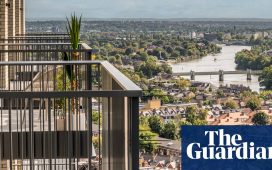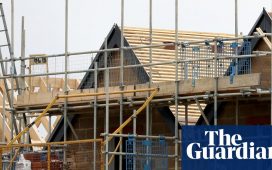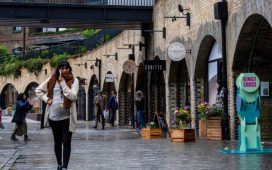When excavating the foundations for London’s latest luxury residential tower, archaeologists made an unexpected discovery behind a Shoreditch pub: the remains of a 16th-century Shakespearean theatre.
The remains of the Curtain theatre, which opened in 1577 but was lost from historical records in 1622, was found during the building of a £750m complex of 412 apartments in a 37-storey development that opened on Monday. It has been renamed the Stage.

Archaeologists are frequently called on during the dig stage of central London developments but the team from the Museum of London Archaeology were shocked to discover the theatre is thought to have hosted the premieres of Shakespeare’s Henry V and Romeo and Juliet.
“This is a fantastic site which gives us unique insight into early Shakespearean theatres,” the lead archaeologist, Chris Thomas, said at the time of the discovery in 2012.
The theatre was the main arena for Shakespeare’s plays until the Globe was completed south of the River Thames in 1599. It is unclear what happened to the playhouse as it seemed to vanish from records after 1622.
The remains of the theatre, which have been painstakingly preserved, will be included in a new Museum of Shakespeare on the site that will use the latest AI technology to allow theatre lovers to walk across the Elizabethan stage where Shakespeare performed as an actor and that may have staged the first performances of Romeo and Juliet and Henry V.
Set in 1598 and located three metres underground, the museum will retell the life of Shakespeare through “dynamic experiences, innovative theatrical technology and archaeological discoveries”, organisers said. The museum, due to open next year, will include original objects alongside multisensory experiences and a chance to walk on the stage where Shakespeare presented his plays.
Heather Knight, a senior archaeologist at Museum of London Archaeology, said: “Leading the excavations on the site of the Curtain, one of London’s earliest and longest-lived playhouses that have transformed our understanding of early modern performance, has been an immense privilege and I am very much looking forward to the next chapter in the history of the Curtain.”
The Curtain’s name had nothing to do with theatre: it came from the ancient Curtain Road, which flanked the old curtain wall of a medieval priory. It was one of two playhouses, 100 metres apart, described by one visitor as standing in a fair meadow, just outside the city walls. It is the least well-documented of Shakespeare’s theatres, but one of the few facts is that he was listed as an actor in the first performance of Ben Jonson’s Every Man In His Humour, in 1598.

Above the museum stands a 37-storey tower of 412 apartments costing a minimum of £750,000 for a 46 sq metre studio, rising to £3m for a three-bedroom apartment on the 35th floor. Of the 412 flats, 199 have been sold. Two-storey penthouse apartments on the top two floors will be launched next year and are expected to cost £7m.
David Galman, the sales director for the Stage, said: “We are delighted to unveil the Stage, our striking residential tower now complete. The Stage forms part of a new cultural hub for Londoners, transforming this historic site from Shakespeare’s times into a modern destination for the 21st century.
“Today’s buyers want access to state-of-the-art amenities, and this is where the Stage stands out, with our underground amusement arcade, flexible workspaces and stunning sky terrace overlooking London. We are very proud to show the lifestyle on offer, an unparalleled experience in a sought-after location. Given the significance of this site, it has been a combined effort with our partners to bring the vision to life into a landmark development for future generations to enjoy.”











